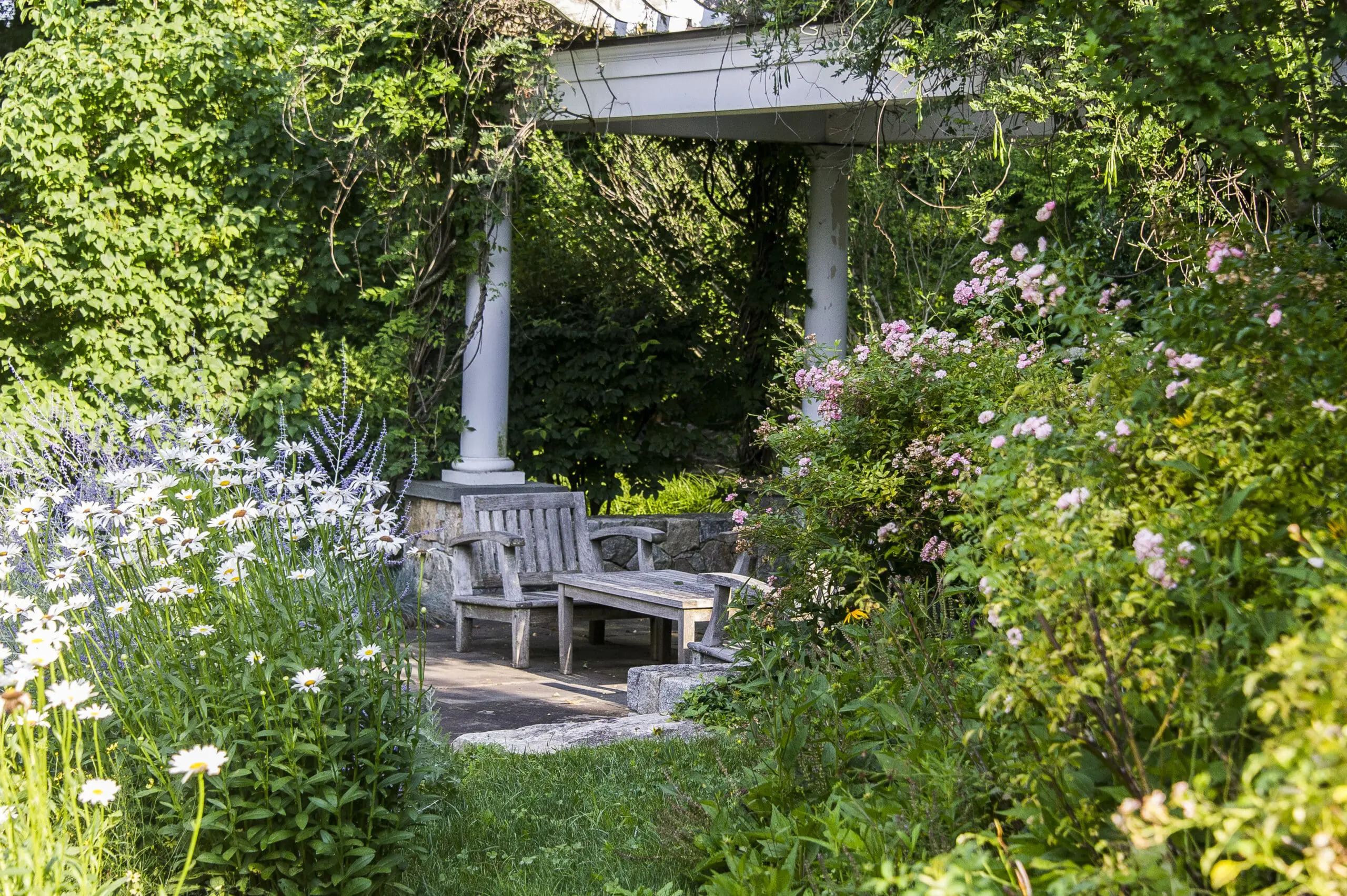This Bedford, New York property had significant landscape architecture work done to break up the steep rear slope. A series of terraces were designed to create functional living space in the backyard, including a flat lawn area and an arbor adorned terrace at the top of the hill.
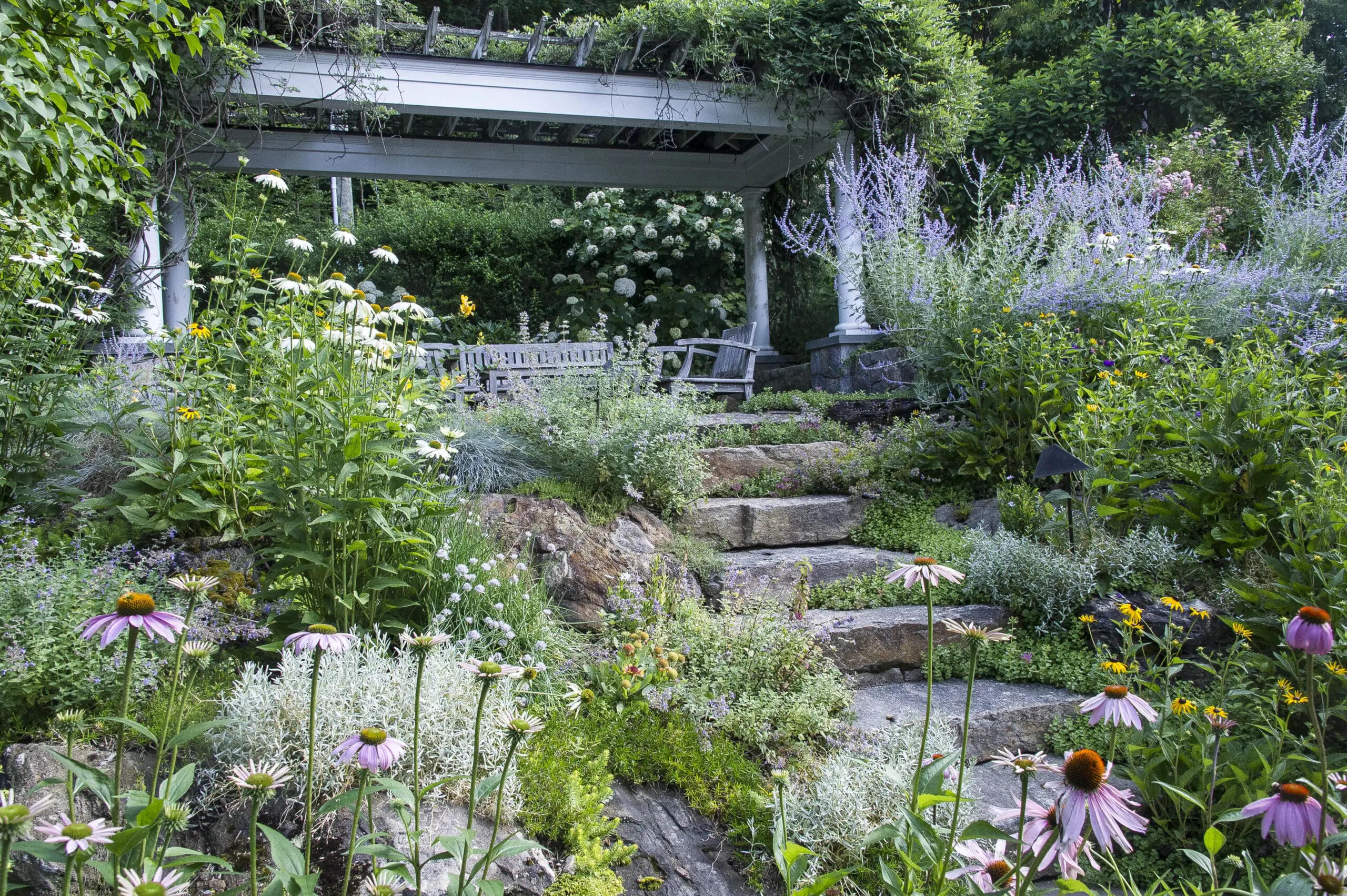
This transformation undoubtedly took significant calculation and precise grading, as well as skilled masonry to navigate the slope via stone steps. We can only applaud this work (not completed by GJLD)! The planting design, however, relied on traditional, exotic, ecologically-dead plants such as boxwoods and liriope.
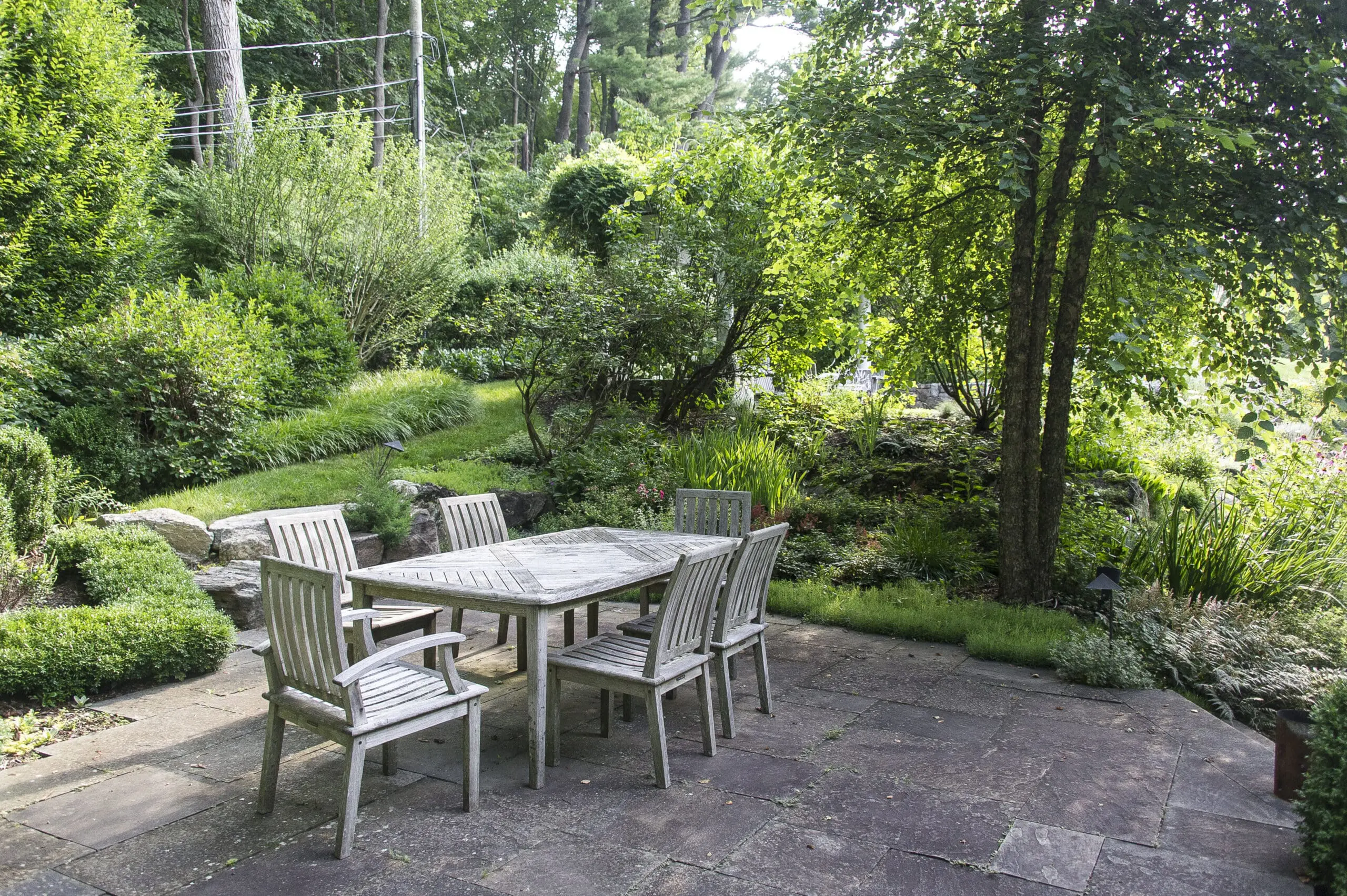
Green Jay Landscape Design was hired to reimagine the planting design into a less rigid, more naturalistic composition. By invigorating the landscape with more native plants, we simultaneously enrich biodiversity—from soil microbes to pollinators and songbirds—everyone benefits from a more diverse landscape. More details on this landscape design and landscape construction project below. All photos by Richard Pomerantz.
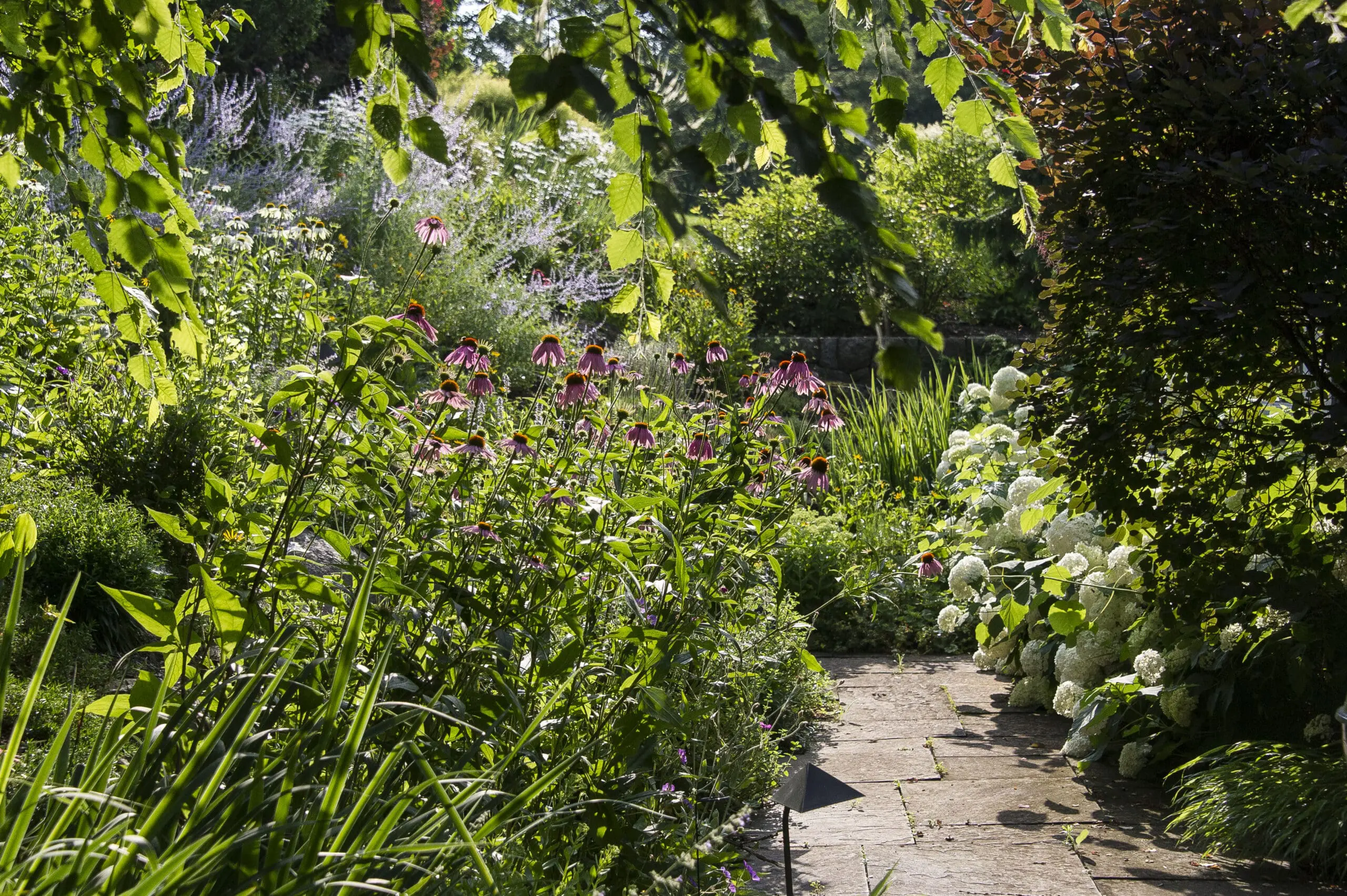
Designing a Naturalistic Plant Composition by Zone
To blend the two styles – formal and naturalistic – we deployed for a few landscape design tools, depending upon the zone. We define zones by their spatial geography, function in the landscape, and microclimate.
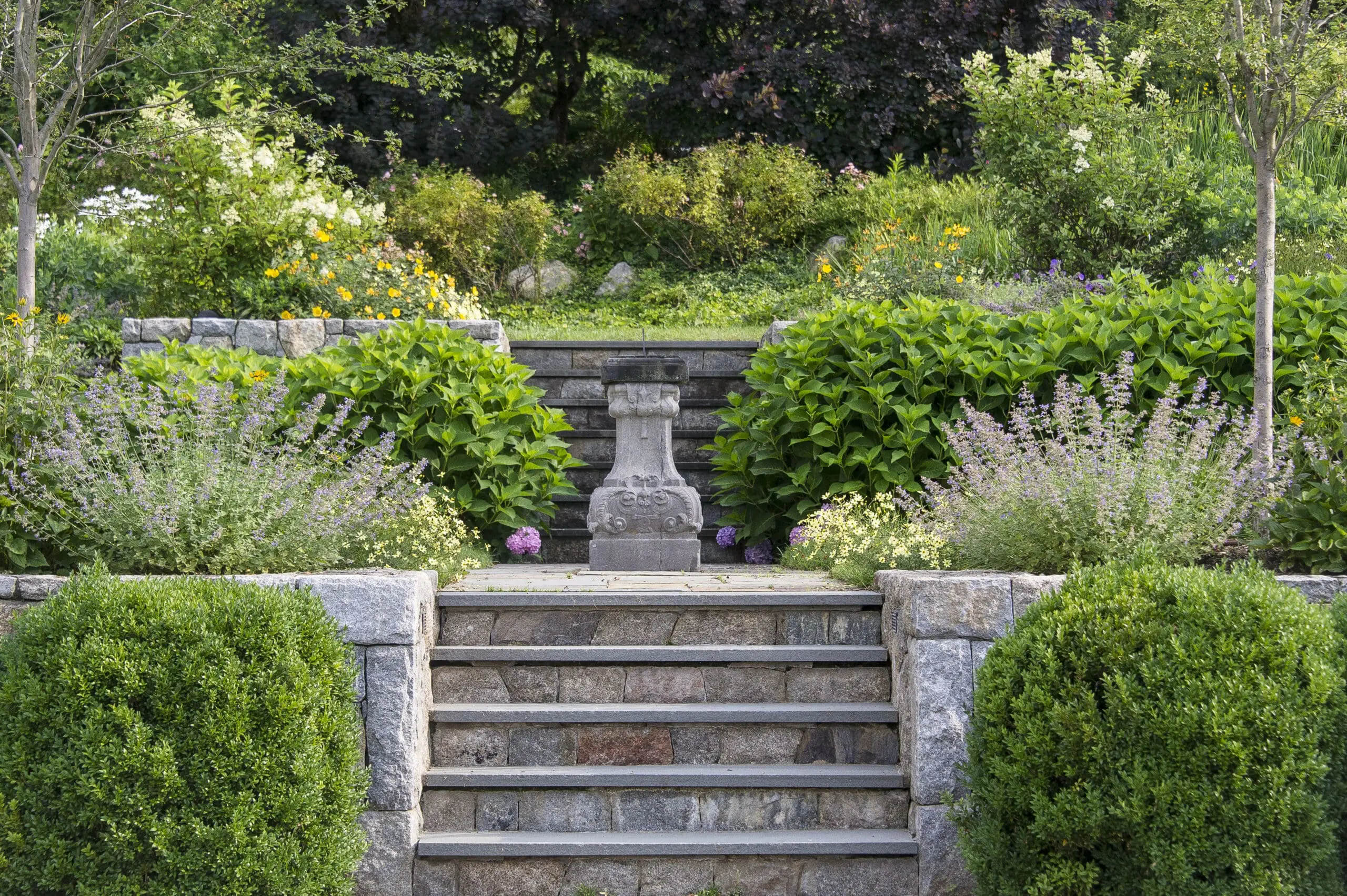
For the side entrance off the driveway, for example, we maintained the formal aesthetic with symmetrical plantings lining each side of the steps and walk. We kept the overall planting short in stature to soften but not overwhelm the masonry.

The planting beds and plant selection become more diverse and less symmetrical as we navigate up the slope, yet the repetition of the boxwood and hydrangea hedges provide a tidy frame for the more wild planting, keeping with the formal aesthetic of the side yard.
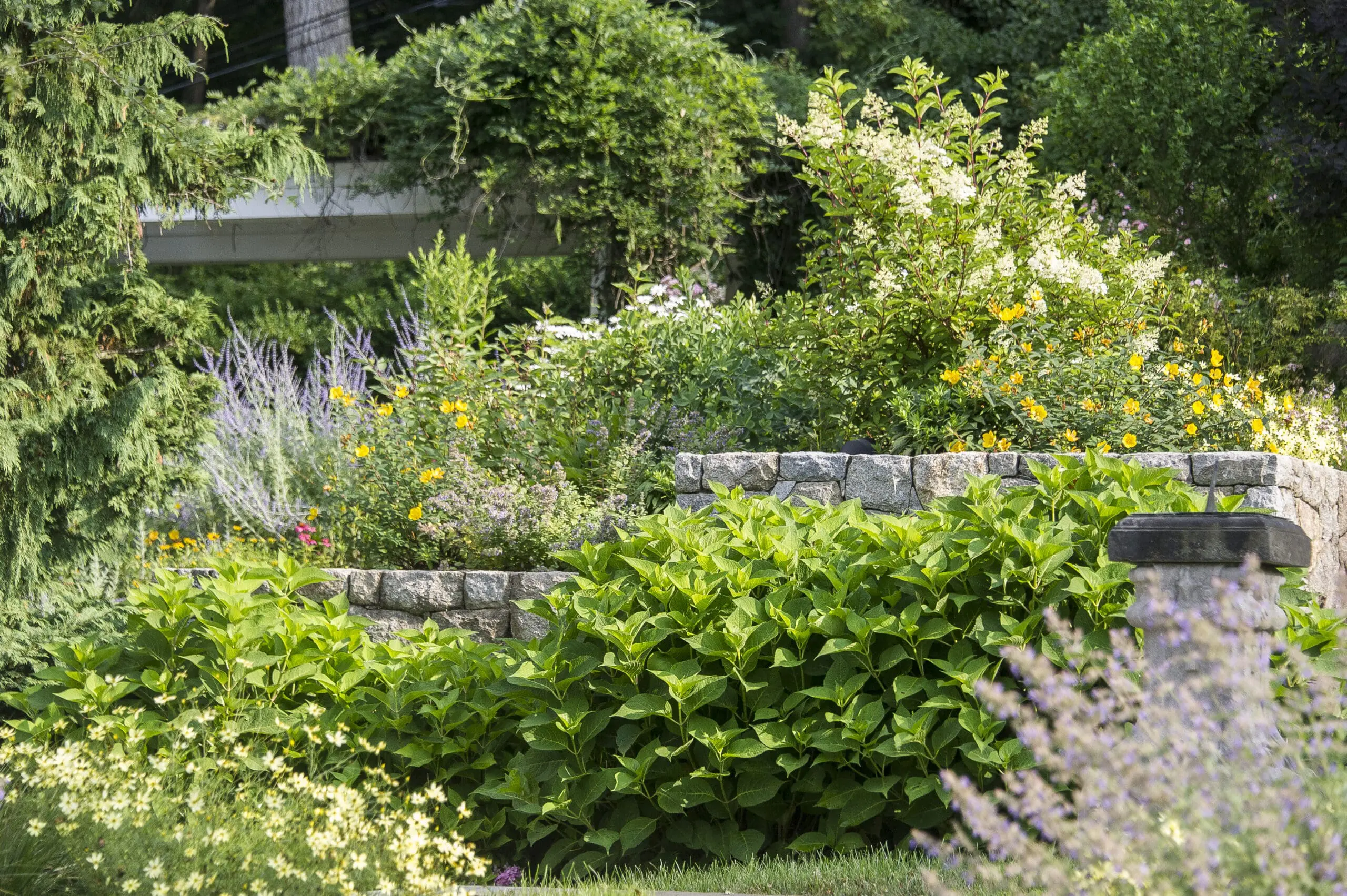
We continued the more formal style around the upper terrace’s pergola – framing both sides with native ‘Anabelle’ Hydrangea.
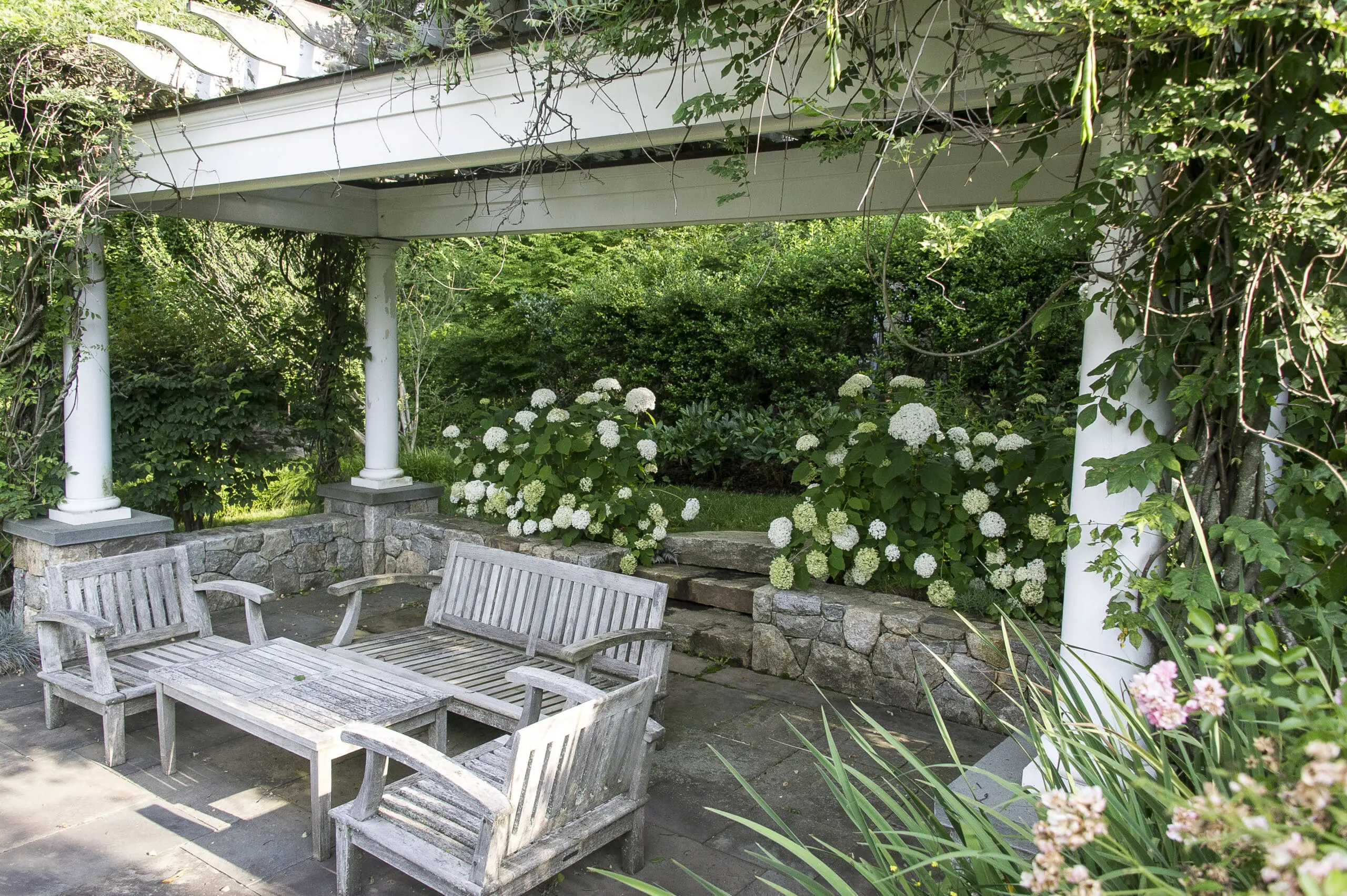
The slopes between the terraces received a more naturalistic and erosion-inhibiting planting design. Here lies the greatest diversity of plant species and, correspondingly, the greatest diversity of insects and wildlife attracted. Designing for a slope requires a plant selection that occupies different root depths to best stabilize the soil and maintain the integrity of the slope. Our combination of deeply rooted ornamental grasses and perennials with differing root structures accomplishes this. Repetition of a few highly-ornamental perennials – like Echincaea and Pervoskia – helps tie together a diverse planting into a cohesive composition.
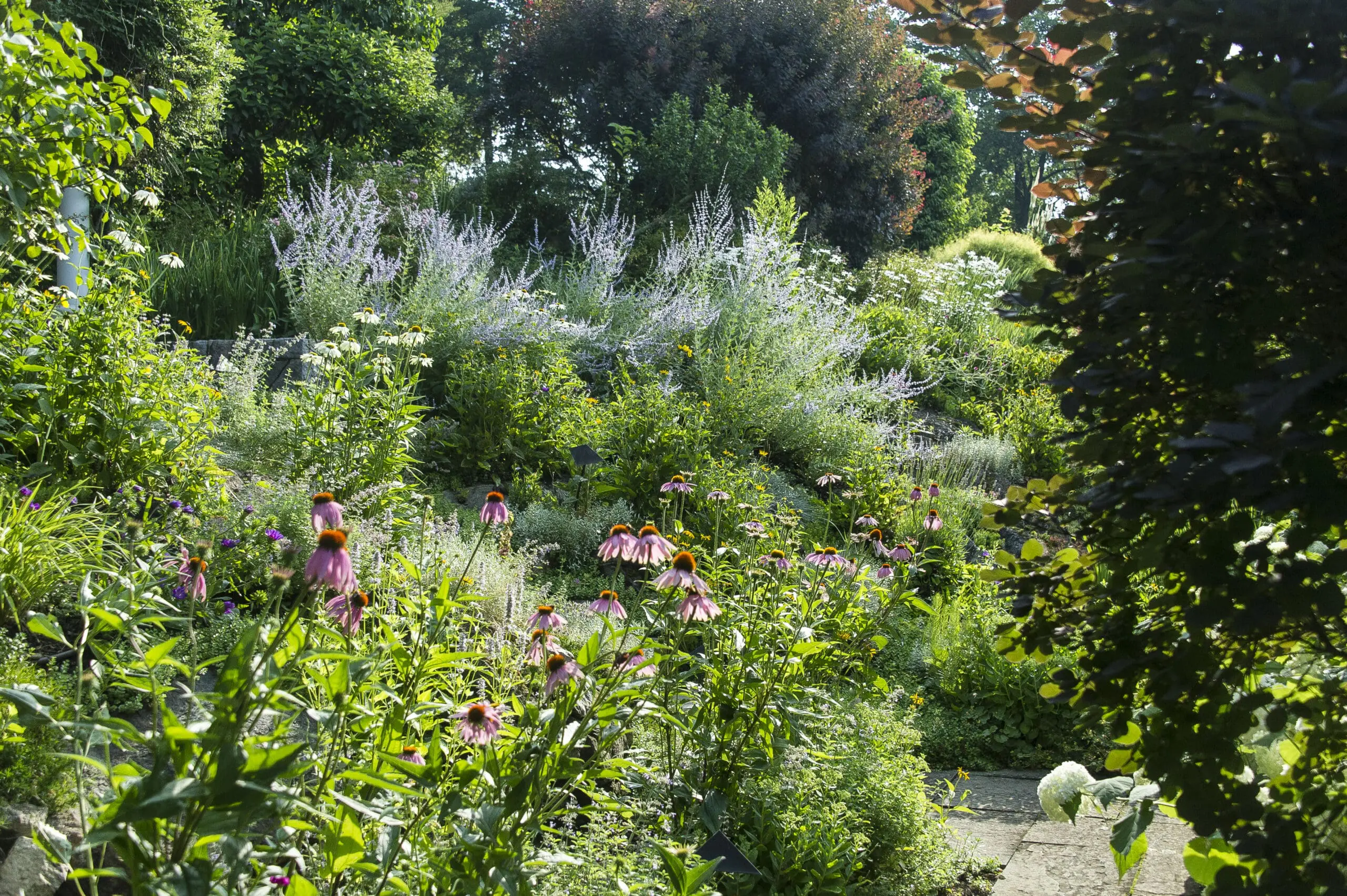
We lined the impressive stone steps with spilling, spreading groundcovers for a cottage garden vibe that makes the stone appear to be rooted in the landscape, as if they had been there for eons.
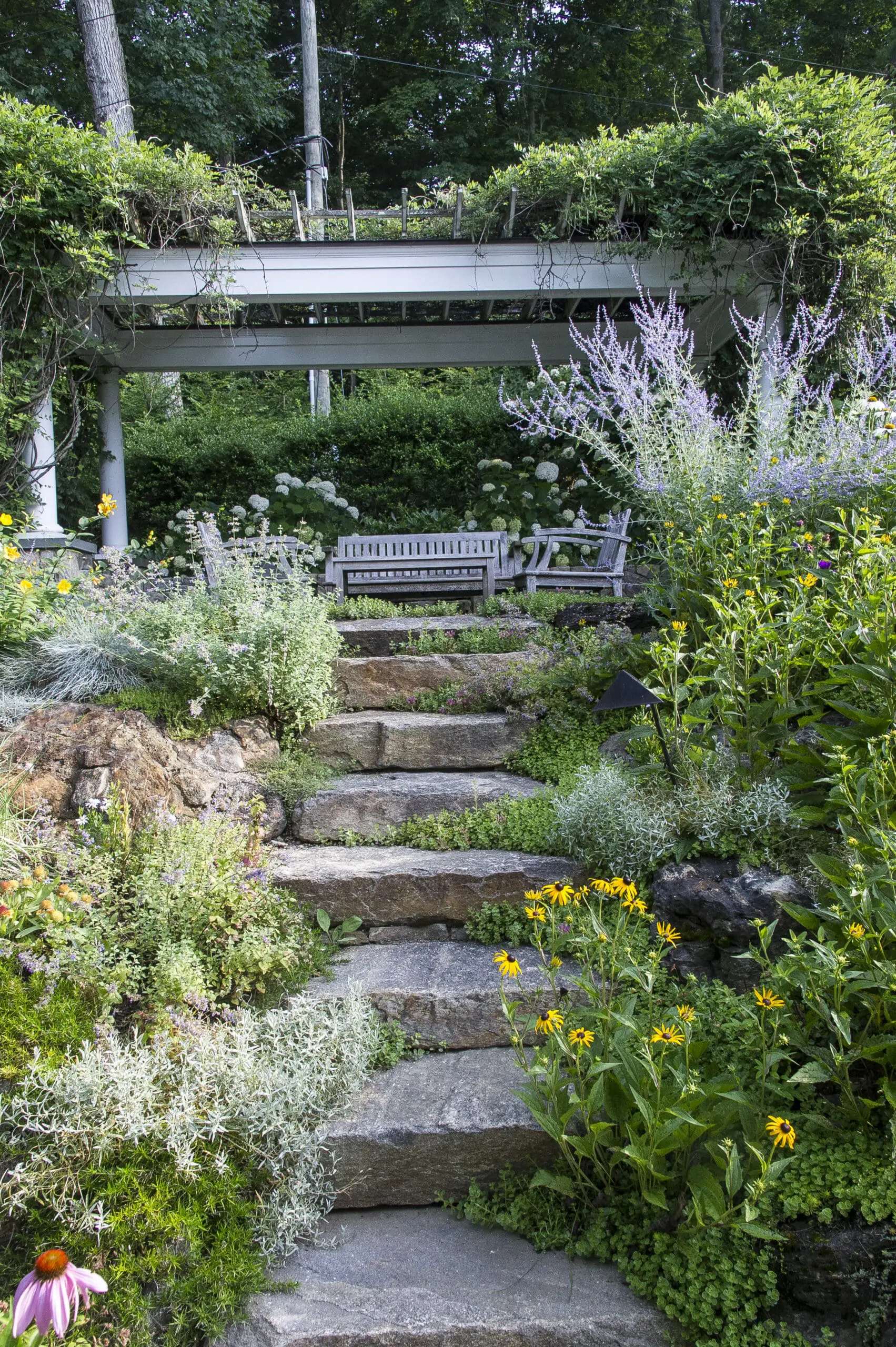
Evaluating What Heritage, Non-Native Plants to Keep
There are a few criteria we evaluate when deciding whether to keep an existing nonnative plant. First off, if the plant is considered invasive in our area, we will almost always remove it. (In rare instances, the invasive plants might be so entrenched in an ecosystem niche, removing it is virtually futile, and stunting or managing might be a better approach. See: Phragmites Case Study).
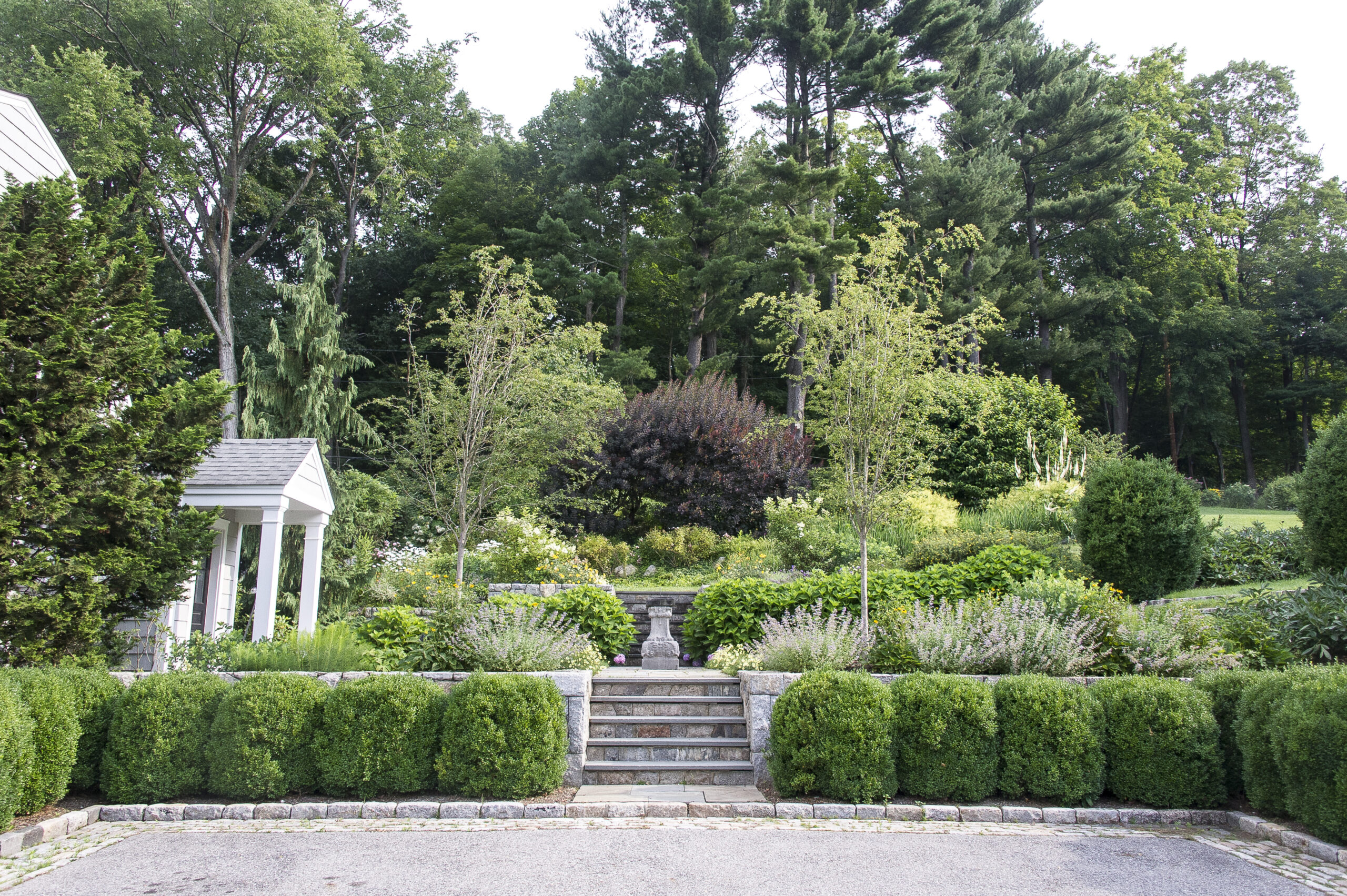
The second criteria we evaluate is how the plant is currently performing where it is planted. If the plant looks good, but isn’t delivering the desired look or ecological contribution, we might opt to transplant it to another area. For example, we’ve repurposed Miscanthus from a high-visibility area to a grass garden within an expansive lawn area. The grass garden is contributing to the ecosystem by reducing the lawn area – a much more needy and resource-demanding crop. This allows us to save our clients’ money by repurposing plants and allows us to affect areas of the property that might be a lower priority for a complete landscape renovation.

The same goes for plants that might be struggling where they are planted. It is likely because they aren’t receiving their desired light amount or soil type. We have relocated countless hydrangea from intense afternoon sun to a more forgiving partial sun zone.
Often, older traditional plantings are decades old and are simply overgrow and too large to transplant. To the compost pile they go!
In this case, we opted to keep the existing boxwoods in front of the stone wall for a few reasons:
- They are healthy and mature – planted in the right site conditions!
- They match the formal aesthetic for a high-visibility zone and entrance to the backyard
- While they don’t contribute much ecologically, they aren’t invasive or aggressive either

Formal and Wild Landscaping Styles Can Coexist
This property, if anything, is representative of how modern naturalism can be incorporated into any style of landscape architecture and complement many styles of architecture. By the way, this landscape was installed in the peak of summer, during intense ninety-degree heat. We deployed our “Magic Wand” of soil amendments for heat stress, including soil drenching each plant with a cocktail of compost tea, bio-stimulants, and yucca to reduce transplant shock and help the vulnerable plants develop strong root systems in challenging conditions.
